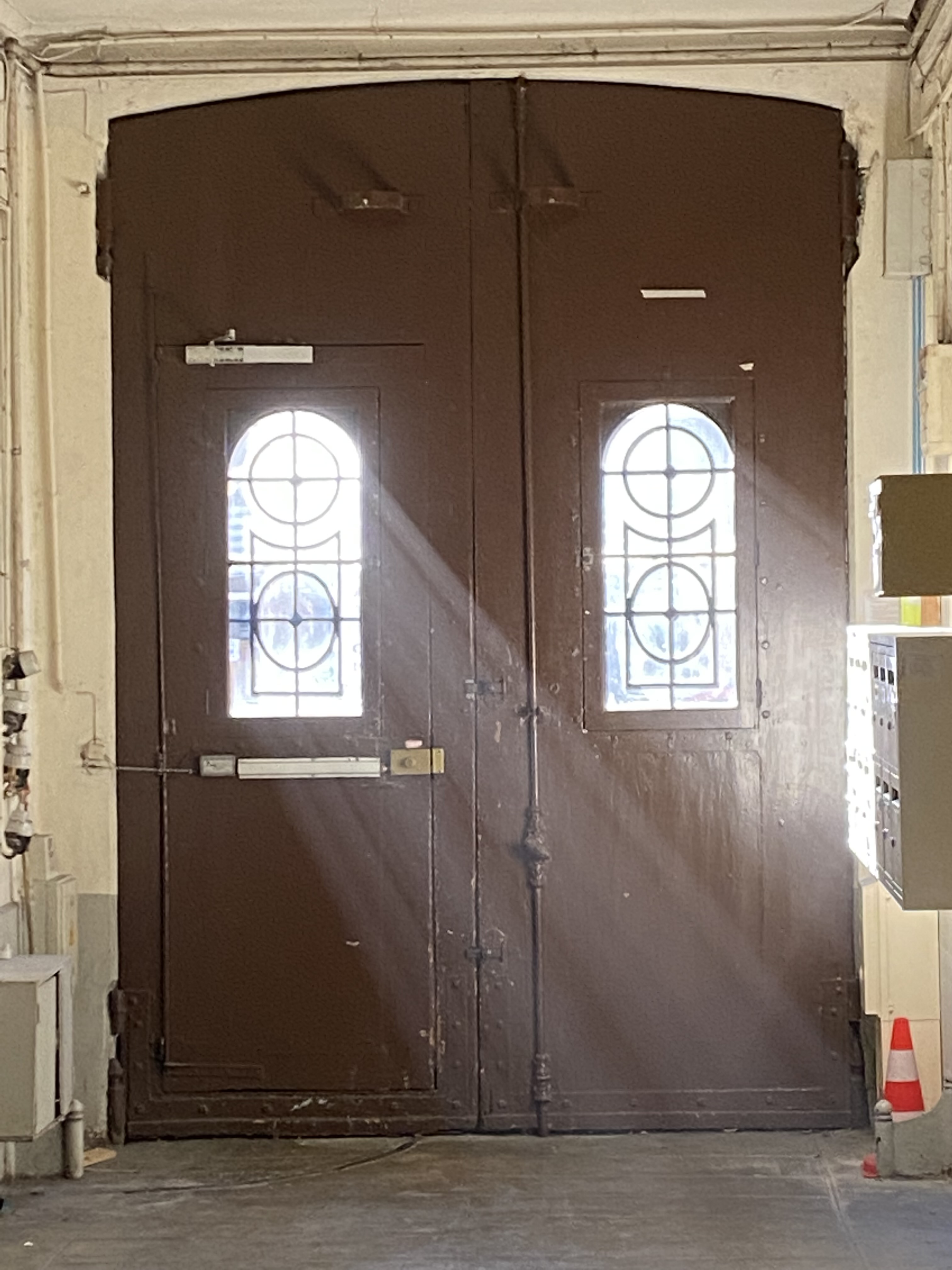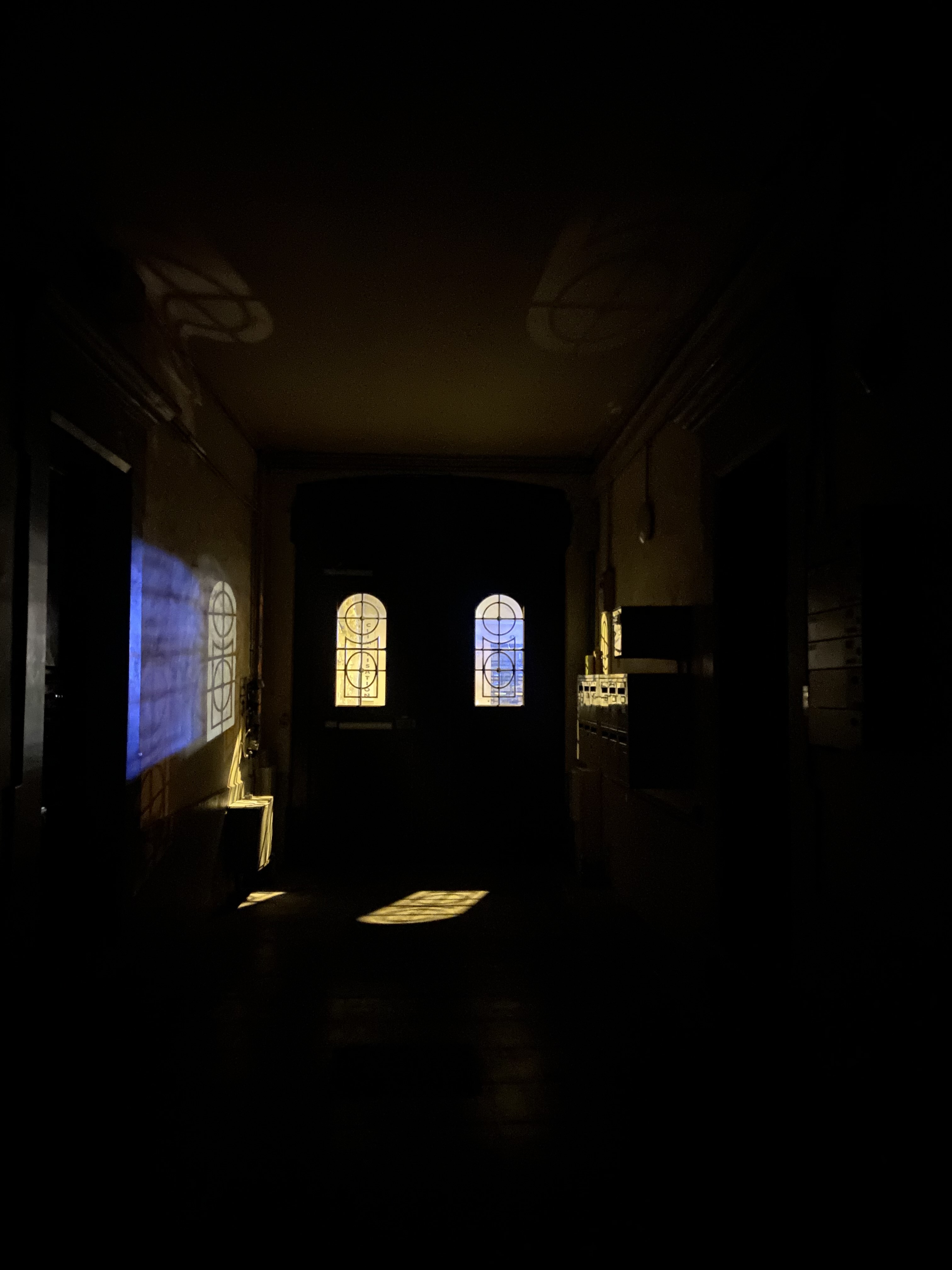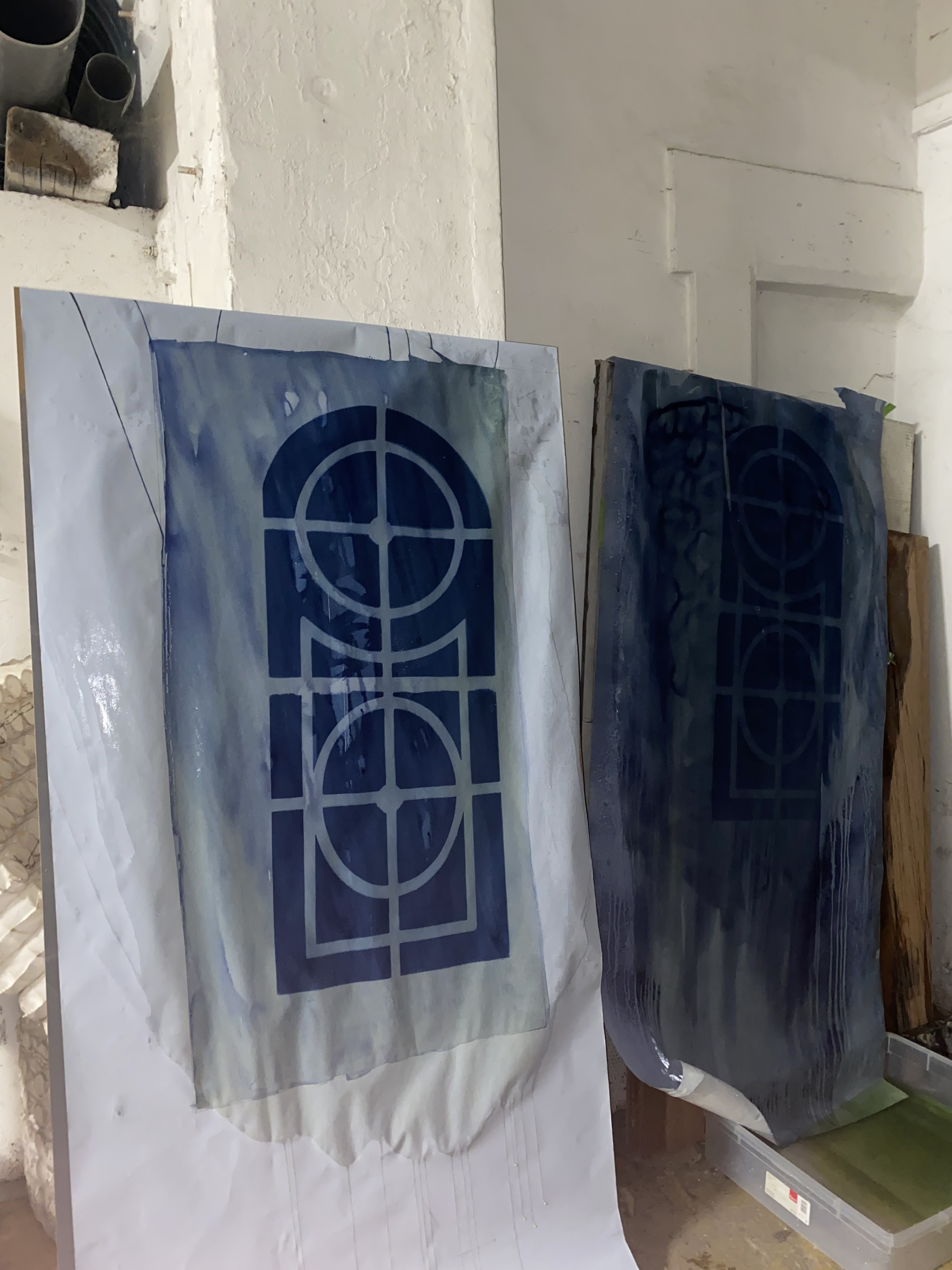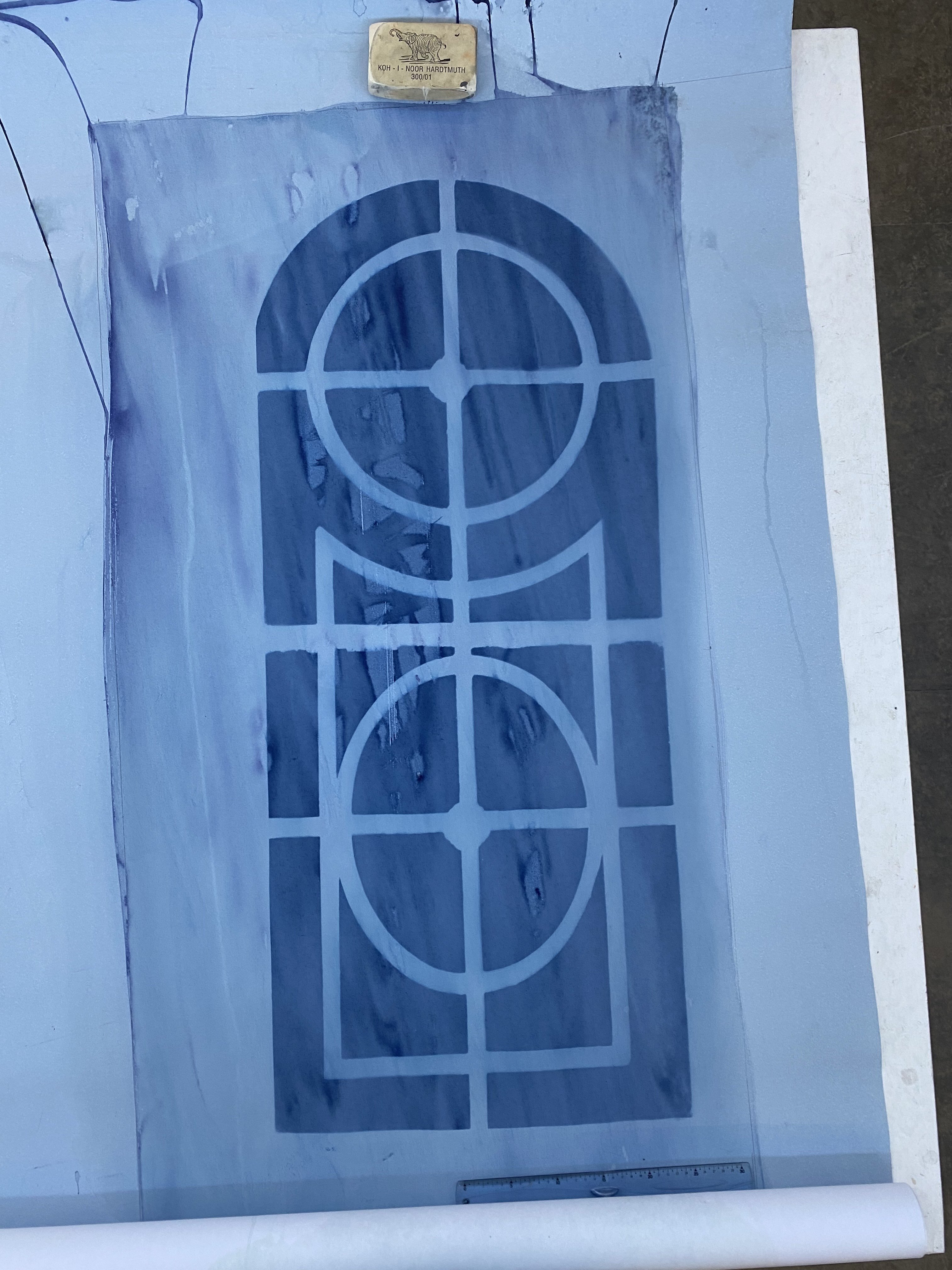Cyanotype du portail, 2020-21
Cyanotype fluid and paint on canvas or canson graffitti paper
2020-21, Boulevard Nationale
During Lockdown, called confinement in France, the artist began experimenting with cyanotype—a photographic process that relies on sunlight and close contact between object and surface. The wrought iron doorway of their building became both subject and stencil.
By tracking the sun’s movement and observing how light filtered through trees and between buildings, the artist captured the fleeting moment when the window of this large entrance doorway received direct light. The work reflects not just a technical process, but the emotional weight of crossing a threshold during Covid-19—when stepping outside meant asking for many for the first time, “Do I have the right go outside?”
What is cyanotyping?
The cyanotype process is a precursor to photography. Cyano refers to the hue of the ink. In Greek, this technique was called photogram: “photo” (light) and “gram” (drawn/recorded). It relies on direct sun exposure from an object to the print surface for the shadow to designate the contact with the light. The part of the image that is in contact with the sunlight, develops into a darker blue hue, which is what makes this historical process recognisable, the iconic blue hue. The shadow of the object, or stencil, prevents the photo-sensitive liquid to develop, and is the pigment or chemical solution is washed away : to reveal a ghost like image. Where the object exists, light does not pass, therefore cyanotypes create an impression of the light passing through the image, which is thus the inverse of the object itself on print.
Why did you decide to learn this process?
Firstly, I learnt that by appropriating historical techniques, we can still create something new, or contemporary. I learnt patience, this work was not about just making a "photocopy" of the architecture, but following and tracking the movement of the sun, and being prepared for the exact season and moment, when the sunlight was able to pass through this doorway.
How did you learn?
By trial and error, of course. Using a doorway, an architectural and structural part of a building as a stencil, poses unique challenges. People use the doorway so there is movement and unexpected elements. It was also one of the largest prints that I was making, which required large rolls of paper or canvas.
What did you learn?
That, once again, printmaking is not a DIY or craft element. At this time, when I looked for references and examples of large cyanotypes, I mostly found people where using flowers, plants or existing photographs printed on transparency. I wanted to break from this "traditional" technique and use it to photo-copy objects, not as decorative elements, but also focus on the utility of this doorway, which has remained in that space for over 200 years.
A lecturer of photography, J. Brundit, once explained in our course with them, that they succesfully created a pin-hole camera in a shipping container. This project immediately elucidates questions of mobility, functionality as well as the power of the camera to convey a message. Remembering this work that they shared helped to formulate and inspire this work.
Photograph of the doorway, 2020
Digital photograph

Sunlight documentation through door, 2020
Digital photograph #cyanotype #printmaking

Considering the light as print, 2020
#photogram #cyanotype #process

Photogram, 2020
Cyanotype on Canson, 1x3m

Photogram, 2020
Cyanotype on Canson, 1x3m